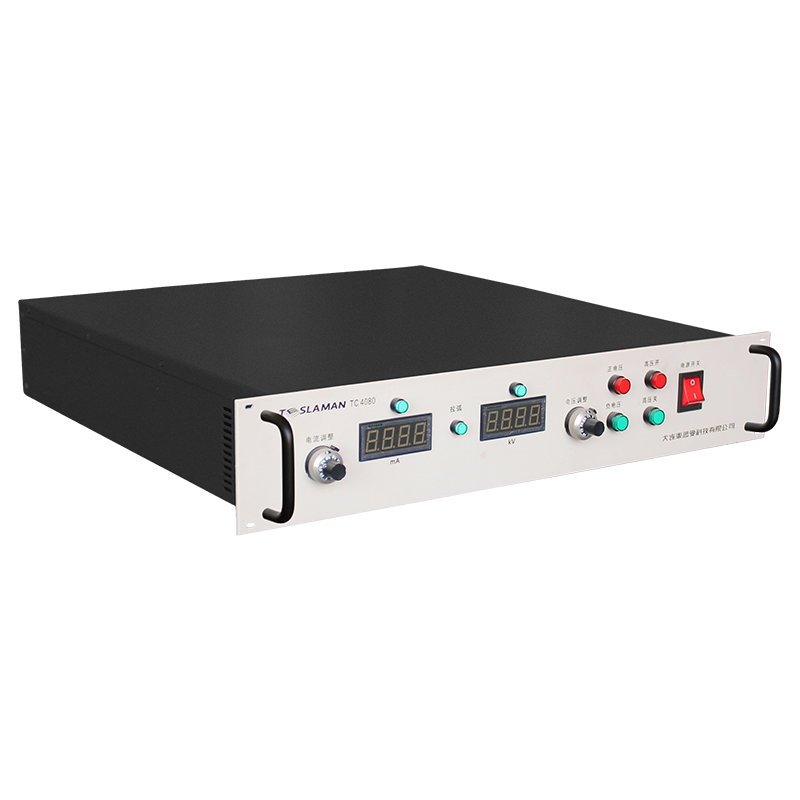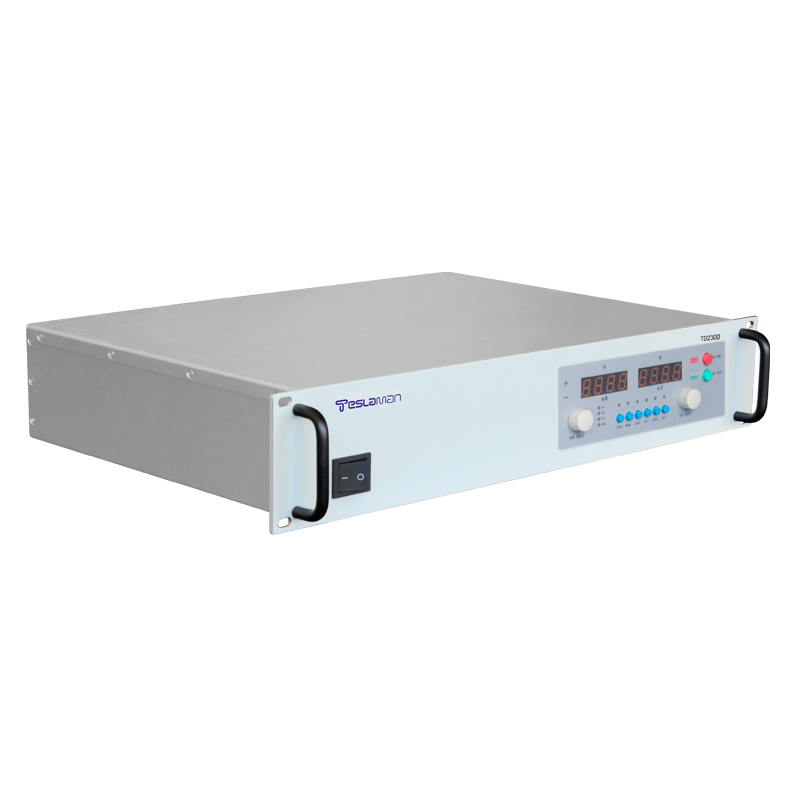Analysis of Process Improvements in High-Voltage Power Supplies for Coating Applications
Coating technology is a crucial component in modern industry and scientific research, with widespread applications in optics, semiconductors, display panels, photovoltaics, and decorative coatings. In the coating process, high-voltage power supplies are one of the core devices, and their performance directly determines the quality, uniformity, and adhesion of thin films. As industrial demands continue to rise, the requirements for high-voltage power supplies used in coating processes have become increasingly stringent. This article will explore the working principles, key performance indicators, and strategies for process improvement of high-voltage power supplies in coating applications.
1. Working Principles and Role of High-Voltage Power Supplies in Coating
The primary function of high-voltage power supplies in coating processes is to provide a stable high-voltage electric field to accelerate ions or electrons toward the target material or substrate surface, thereby achieving thin-film deposition. Depending on the type of coating technology (such as magnetron sputtering, ion beam coating, or plasma-enhanced chemical vapor deposition [PECVD]), the specific operating modes of high-voltage power supplies vary:
1. Magnetron Sputtering
In magnetron sputtering, high-voltage power supplies apply direct current (DC) or pulsed voltage to generate plasma on the target surface, causing argon ions to bombard the target material and release atoms that deposit onto the substrate. The output characteristics of the high-voltage power supply directly affect the sputtering rate and film uniformity.
2. Ion Beam Coating
Ion beam coating requires high-voltage power supplies to provide stable acceleration voltages to control the energy and direction of the ion beam, enabling precise control over film thickness and structure.
3. PECVD Processes
In PECVD processes, high-voltage power supplies are used to excite gas molecules to form plasma, promoting chemical reactions that result in thin-film formation. The frequency, waveform, and stability of the power supply play a decisive role in determining the chemical composition and density of the film.
The performance of high-voltage power supplies not only affects film quality but also impacts process efficiency and equipment lifespan. Therefore, improving the process of high-voltage power supplies has become a focal point in the industry.
2. Key Performance Indicators of High-Voltage Power Supplies for Coating
To meet the demands of coating processes, high-voltage power supplies must possess the following key performance indicators:
1. Output Accuracy and Stability
Coating processes are highly sensitive to voltage fluctuations; even minor variations can lead to uneven film thickness or compositional deviations. Therefore, high-voltage power supplies must achieve extremely high output voltage accuracy (typically better than 0.1%) and maintain long-term stability during operation.
2. Low Ripple and Noise
The output ripple and noise of high-voltage power supplies can directly affect plasma stability, thereby impacting film quality. This interference is particularly significant in precision optical coatings or semiconductor manufacturing. Thus, advanced filtering techniques and shielding measures must be employed in the design of high-voltage power supplies to minimize ripple and noise.
3. Dynamic Response Capability
In certain dynamic coating processes (such as multi-layer deposition or rapid parameter switching), high-voltage power supplies must adjust voltage levels within milliseconds to adapt to varying process requirements. This requires excellent transient response characteristics and flexible programmable control functions.
4. Wide-Range Adjustment Capability
Different coating processes have varying voltage requirements. For example, magnetron sputtering may require DC voltages ranging from hundreds to thousands of volts, while PECVD may require high-frequency AC voltages. Therefore, high-voltage power supplies should offer wide-range adjustment capabilities to meet diverse needs.
5. Environmental Adaptability and Reliability
Coating processes typically occur in vacuum environments, posing special requirements for the vacuum resistance and thermal management of high-voltage power supplies. Additionally, features such as overvoltage protection and short-circuit protection are essential to ensure long-term safety and reliability.
3. Strategies for Process Improvement in High-Voltage Power Supplies for Coating
To further enhance the performance of high-voltage power supplies and meet the demands of advanced coating processes, improvements can be made in the following areas:
1. Optimization of Circuit Topology
Traditional linear high-voltage power supplies, while stable, are inefficient and bulky. In recent years, switch-mode high-voltage power supplies have gradually become mainstream. By introducing soft-switching technologies (such as zero-voltage switching [ZVS] and zero-current switching [ZCS]), conversion efficiency can be significantly improved while reducing electromagnetic interference (EMI). Furthermore, multi-stage boost topologies can incrementally increase voltage, reducing stress on individual stages and enhancing overall system reliability.
2. Introduction of Wide-Bandgap Semiconductor Devices
Wide-bandgap semiconductor materials (such as silicon carbide [SiC] and gallium nitride [GaN]) are ideal for improving the performance of high-voltage power supplies due to their excellent high-temperature tolerance, high-frequency characteristics, and low on-resistance. Compared to traditional silicon-based devices, wide-bandgap components can operate at higher frequencies while significantly reducing switching and conduction losses, thereby improving efficiency and reducing size.
3. Application of Intelligent Control Technologies
Intelligent control algorithms based on artificial intelligence (AI) and digital signal processing (DSP) can monitor system status in real time and dynamically adjust output parameters to achieve optimal process control. For example, load-adaptive regulation technology can automatically optimize voltage, frequency, and waveform based on target material, substrate shape, and process conditions, thereby improving film quality.
4. Improvement of Thermal Management
High-voltage power supplies generate heat during operation, and inadequate heat dissipation can lead to increased device temperatures, higher losses, and reduced stability. Therefore, efficient thermal management solutions (such as liquid cooling, air cooling, or heat pipes) are critical for maintaining high efficiency and long service life.
5. Enhancement of Anti-Interference Capability
Plasma discharges in coating processes may generate strong electromagnetic interference, affecting the normal operation of high-voltage power supplies. By optimizing shielding designs, adopting differential signal transmission, and enhancing filter networks, the anti-interference capability of power supplies can be effectively improved, ensuring process stability.
4. Challenges in Practical Applications
Despite significant progress in the performance of high-voltage power supplies for coating processes, several challenges remain in practical applications:
1. Adaptability to Complex Process Conditions
Different coating processes have varying demands on high-voltage power supplies. For example, magnetron sputtering requires stable DC voltage, while PECVD requires high-frequency AC voltage. Designing adaptable high-voltage power supplies remains a key focus for future research.
2. Balancing Miniaturization and High Efficiency
As equipment trends toward miniaturization, achieving efficient heat dissipation and high power density within limited space presents a design challenge.
3. Stability in Extreme Environments
In vacuum, high-temperature, or high-radiation environments, the performance of high-voltage power supplies may be affected. Ensuring high-quality output under extreme conditions remains an important issue.
5. Conclusion
Process improvements in high-voltage power supplies for coating applications are a key factor in advancing coating technology. By optimizing circuit topology, introducing wide-bandgap semiconductor devices, applying intelligent control technologies, and enhancing thermal management, the performance of high-voltage power supplies can be significantly improved to meet the demands of advanced coating processes. However, challenges related to complex process conditions and extreme environments still need to be addressed in practical applications.
With the continuous development of power electronics technology, high-voltage power supplies for coating applications will play an increasingly important role in advanced fields, providing more efficient and reliable solutions for scientific research and industrial production.




















